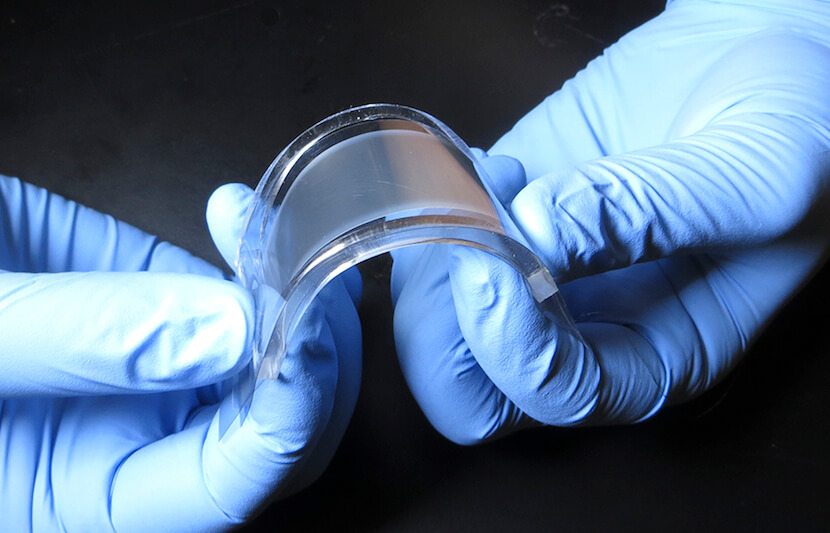A team of researchers from the UCLA Henry Samueli School of Engineering and Applied Science and SRI International, an independent, nonprofit research center, have created a thin flexible device that functions as a cooling mechanism to prevent overheating in mobile electronics.
This is the first demonstration of a physical object that can change a material’s temperature after applying an electric field to it — an occurrence known as the electrocaloric effect.
Because vapor compression, the process that cools larger devices such as refrigerators and air conditioners, is too large for devices like mobile phones, engineers have long struggled how to prevent smaller devices from overheating. That is what motivated the study’s lead investigator, UCLA professor of materials science and engineering Qibing Pei, to devise “a personalized cooling system,” as he phrased it in a statement.
The thin, flexible design of the polymer film makes it possible for the device to adapt to mobile electronics with complex designs or surfaces that move, and the polymer film itself allows the transfer of heat from the overheated device to the mechanism by switching electric voltage on and off, allowing the two devices to alternate contact. This means that the cooling pad not only prevents a mobile phone or laptop from overheating after extended use, but it can do so in an energy-efficient way.
This device could have other uses as well. It “could keep a person comfortable in a hot office and thus lower the electricity consumption for building air conditioning,” said Pei in a statement. “Or it could be placed in a shoe insole or in a hat to keep a runner comfortable in the hot Southern California sun. It’s like a personal air conditioner.”
In addition, the device could be used to treat injuries and aid firefighters and scientists by reducing thermal noise in thermographic cameras or night-vision glasses.
The researchers do not have a definite timeframe yet for making this cooling device ready for commercial purposes. “The technology is at early stage of development, and we are working on transitioning into product developments,” said Pei. But with “unlimited resources,” Pei estimates that they could be in the product development stage in “2-3 years” time.
The study also includes UCLA postdoctoral scholar Rujun Ma and doctoral student Ziyang Zhang from Pei’s research group as lead authors, UCLA graduate student Kwing Tong, SRI research engineer David Huber, and UCLA professor of mechanical and aerospace engineering Yongho Sungtaek Ju.
The researchers have applied for a patent for the device with the U.S. Patent & Trademark Office.
Two U.S. governmental agencies — the Department of Energy’s Advanced Research Projects Agency–Energy and the Air Force Office of Scientific Research — supported this research.



